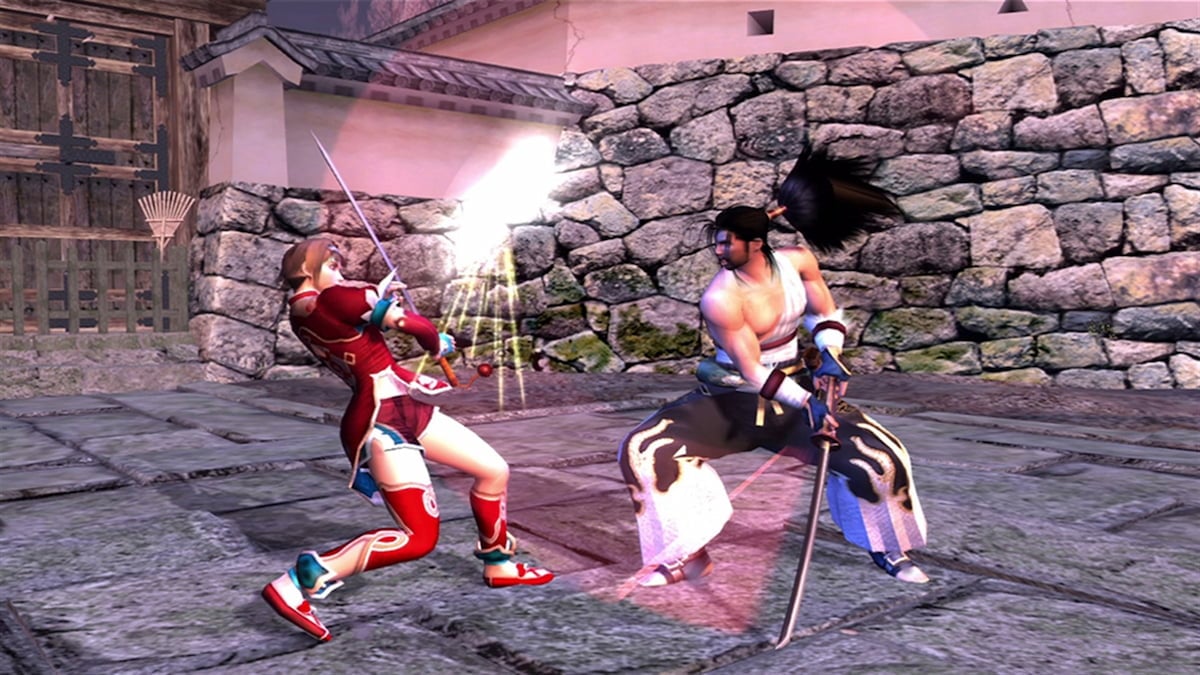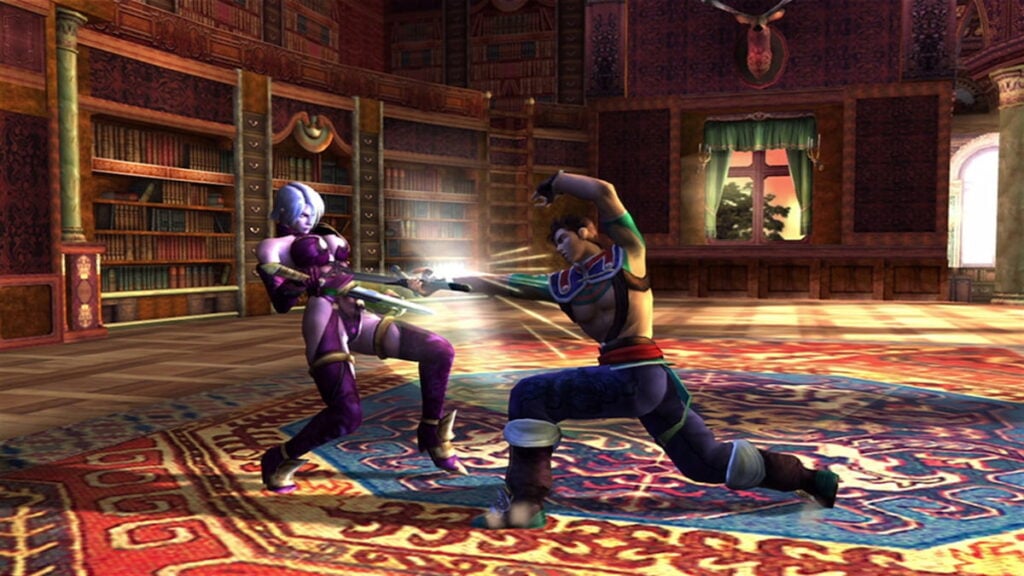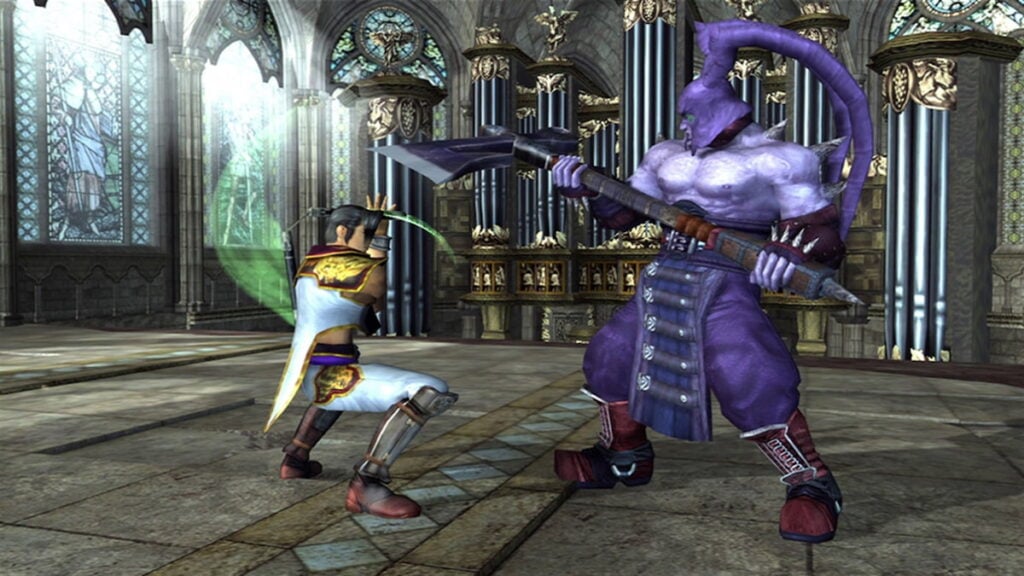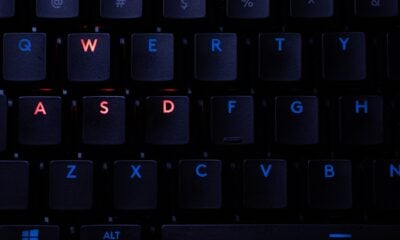Culture
20 Years Later: Soulcalibur II is Fighting Game Perfection
Now that the Japanese console versions of Soulcalibur II are 20 years old, it’s worth looking back at why the game remains so iconic.

To this day, Soulcalibur has a unique appeal that no other fighting franchise has managed to replicate. Much of this can be attributed to the series’ trademark 8-way run system, which takes full advantage of the 3D space by offering a degree of movement freedom rarely seen in other fighters. But of course, there is so much more to appreciate on top of that. The fantastical 16th-century setting, the weapon-based martial arts that mix the grounded with the extravagant, and the often dizzying amounts of extra modes and content all put Soulcalibur into a league of its own. And no game has better exemplified the series’ strengths than Soulcalibur II. Released over 20 years ago on Japanese consoles, Soulcalibur II is an easy contender for one of the greatest fighting games ever made.
Much of what makes Soulcalibur II so special can, of course, be traced back to the original Soulcalibur on the Dreamcast, another title often touted as among the best of its genre. The aforementioned 8-way run system introduced in that game was an ingenious method for increasing the accessibility and ease of control for new players while adding an, at the time, unprecedented layer of dynamism to the combat. Unlike most other fighters, moving the stick or hitting the d-pad lets players almost immediately dart toward the specified direction at high speed, and they can switch between the eight possible directions seamlessly. Not only does it give players an incredible amount of control over their positioning, but it also just feels inherently good to control.
Naturally, the 8-way run system makes its grand return in Soulcalibur II, and it is arguably at its best here. Both combatants move remarkably quickly by default, granting fights a thrillingly frenetic tempo that the slower-paced entries like Soulcalibur IV can’t quite match. It stands to reason that such an innovative mechanic should feel both powerful and fun to use, and Soulcalibur II demonstrates a clear understanding of this sentiment. Having said that, the 8-way run isn’t so powerful that it renders the combatants’ offensive options ineffective. It strikes an impressive balance in this sense, allowing both the offensive and defensive aspects of Soulcalibur II to shine equally.

Simple, Yet Deep
Another element of Soulcalibur I translated seamlessly into its sequel is the elegantly simple fighting controls. Mapping horizontal attacks, vertical attacks, and kicks across three separate buttons makes it easy to remember which buttons to press in which situations, and the leniency of the input buffering means that these attacks almost always come out when you want them to. It also helps that the inputs required to execute these moves are rarely complicated. Even though the movelists of each character can get quite extensive, most attacks only require a straightforward sequence of button presses, a directional input, or another comparatively simple action from the player. Of course, more complicated motion inputs in fighting games have their place, but the easier commands in Soulcalibur II better suit the overall beginner-friendly nature of its gameplay.
Complimenting the deemphasis on complex motion inputs is the deemphasis on combo strings. Unlike in other fighting games like Soulcalibur’s sister series Tekken, where juggles serve as a major aspect of high-level play, Soulcalibur II‘s combos rarely go on for more than a handful of moves. And even when you put your opponent in a juggle state, they are given so much air control that they can usually escape your combo before they get clobbered too much. This prevents situations where players are forced to wait until their opponent finishes their combo before they can act again. More importantly, though, it puts more emphasis on the core fundamentals of fighting: studying your opponent, reacting accordingly to their moves, and finding openings to punish.
Defense is Your Best Offense
Reacting to your opponent’s moves is made all the more gratifying thanks to the Guard Impact system. Depending on whether the opponent throws out a high, mid, or low attack, players can input the guard button and either back or forward with the right timing to parry their opponent and leave them open to a counterattack. It’s a fantastic system that rewards players’ knowledge of the characters’ movesets, but what further enhances it is that your opponent can still perform a Guard Impact right after you perform one against them. This can lead to thrilling back-and-forth exchanges where both combatants continuously Guard Impact each other, desperate to find an opening.
Further cementing the elegance of the Guard Impact system is the design of the characters’ movesets. Many attacks have mixed up or delayed timings to throw off players trying to Guard Impact, and those are coupled with moves that can be charged or canceled for similar purposes. This combined with the sheer size of characters’ movesets does a lot to bolster the mind game aspect of Soulcalibur II. Even if you are exceptionally good at evading and Guard Impacting, the wide array of options at players’ disposals ensure that you are always kept guessing, preserving the rush of each fight.
These are all fantastic mechanics, but a great sequel does more than simply carry over what worked before. What does Soulcalibur II add to the table that brings it a step above its predecessor?

Soulcalibur II’s Unique Strengths
Well, one obvious improvement over the original Soulcalibur comes in the form of the sequel’s stage design. Soulcalibur 1’s stages consisted almost entirely of mostly featureless platforms set high in the air or above water, with most of the visual interest taking place in the background. In Soulcalibur II, however, many of the stage layouts are more naturally integrated into the environmental design, resulting in some truly arresting locales for players to battle in. The addition of walls in many of the stages not only makes them more visually appealing, but also serves a gameplay function by letting players knock opponents into the walls for more damage opportunities. The game even features a few stages with environmental hazards, although those are understandably kept to a minimum and are never used outside of the VS. and Weapon Master modes.
Speaking of the Weapon Master mode, this serves as the main single-player mode in the console versions of Soulcalibur II, and it’s staggeringly robust. It builds upon the Edge Master and Mission modes of Soul Blade and Soulcalibur respectively with its focus on unique matches with special conditions. The gimmicks that show up during these fights can get quite creative, such as the earthquakes that stun players at set intervals or the “hot-potato” bombs that you have to pass to your opponent before the timer runs out. There are a surprising amount of missions and gimmicks to contend with, and they generally do a fantastic job at testing players on specific elements of the combat system.
This mode is also where players can unlock more weapons, a mechanic that was introduced in Soul Blade but taken out of the first Soulcalibur. The extra unlockable weapons add a fun casual appeal to the game, which is helped by the fact that the game never bogs you down with stat numbers. A simple description is all the game needs to let you know what each weapon’s strengths and weaknesses are. Of course, not everyone will enjoy the extra gimmicks that the unlockable weapons bring to the table. Fortunately, with the exception of Weapon Master, every mode in the game can be played either with or without the extra weapons, so the decision to engage with these gimmicks is entirely up to you.

An Incredible Soundscape
Some of the most memorable parts of the Weapon Master mode are the dungeons encountered throughout. These take players down branching paths of increasingly difficult fights leading to a boss at the end. Admittedly, feelings of repetition can set in due to the limited background and stage assets. But the dungeons often make interesting use of the Weapon Master mode’s unique gimmicks and have a satisfying sense of progression to them, which is further cemented by the music. Having the background tracks escalate in intensity before reaching an explosive climax at the dungeon’s boss never loses its effectiveness no matter how many times it happens.
In general, the music in Soulcalibur II is the stuff of legends. The first Soulcalibur already boasted some impressive MIDI orchestral pieces, but the sequel takes full advantage of 6th-generation console hardware to produce a soundtrack that has it all. Sweeping orchestral epics, catchy percussion-heavy melodies, and even somber, reflective pieces imbue each stage and battle with both personality and grandeur. It stands as easily the best soundtrack in the entire Soulcalibur series, and there’s a decent case to be made for it being one of the best gaming soundtracks period.
And ultimately, similar praise can be levied at Soulcalibur II as a whole. On the surface, Soulcalibur II can be seen as a relatively safe sequel, one that doesn’t change too much from what the original Soulcalibur already established. But in practice, the improvements and additions the game does have are so well-handled that it hardly matters. The sublime fighting mechanics, iconic soundtrack, beautifully realized world, and sheer density of quality content all make Soulcalibur II one of the titans of its genre. Even if you are inexperienced or outright intimidated by the fighting genre, you owe it to yourself to play this one.

-

 Culture4 weeks ago
Culture4 weeks agoMultiplayer Online Gaming Communities Connect Players Across International Borders
-

 Features3 weeks ago
Features3 weeks agoBest Cross-Platform Games for PC, PS5, Xbox, and Switch
-

 Features2 weeks ago
Features2 weeks agoThe End Is Near! Demon Slayer’s Final Arc Trailer Hints at a Battle of Legends
-

 Features5 days ago
Features5 days agoPopular Webtoon Wind Breaker Accused of Plagiarism, Fans Can’t Believe It!
-

 Features4 weeks ago
Features4 weeks ago8 Video Games That Gradually Get Harder
-

 Features3 weeks ago
Features3 weeks agoDon’t Miss This: Tokyo Revengers’ ‘Three Titans’ Arc Is What Fans Have Waited For!
-

 Game Reviews3 weeks ago
Game Reviews3 weeks agoFinal Fantasy VII Rebirth Review: A Worthy Successor?
-

 Guides3 weeks ago
Guides3 weeks agoHow to buy games on Steam without a credit card
-

 Uncategorized4 weeks ago
Uncategorized4 weeks agoSleep Meditation Music: The Key to Unwinding
-

 Technology3 weeks ago
Technology3 weeks ago2025’s Best Gaming Laptops Under $1000 for Smooth Gameplay
-

 Features1 week ago
Features1 week agoThe 9 easiest games of all time
-

 Technology1 week ago
Technology1 week agoThe Rise of Anonymity and No-Account Platforms in Digital Entertainment














